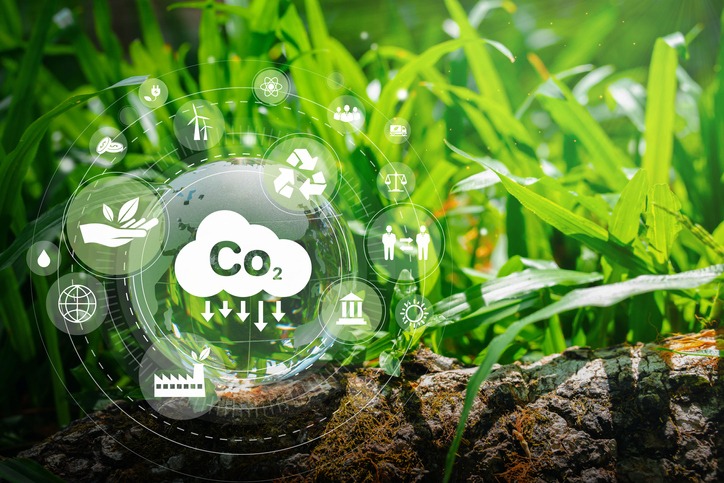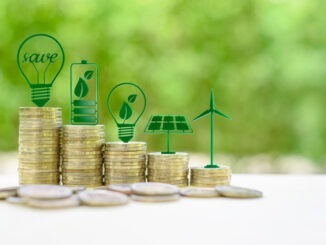
Getting to grips with carbon reduction can feel like a mountain to climb – but every journey starts with one small step
Read the full article below or on page 14 in our May magazine
Reducing carbon is no longer a nice-to-have, but an essential part of our businesses and future strategies – but knowing where to start can be tough, particularly when we’re all so busy with the day-to-day stuff. Thankfully, not all carbon-reducing activities require exorbitant amounts of time or energy, as we’ll explore here.
The importance of measuring
Before we get into ways you can reduce your carbon footprint, it’s essential to know what it is right now. Having a baseline for where you are before any action is taken will allow you to measure what progress has been made – not just for you, but for your customers and stakeholders too.
There are a number of free tools available online to help you calculate your carbon footprint from basic data like energy bills and fuel expenses. At the other end of the scale, more complex calculators start to bring in things like water, waste, supply chain and more. However, if you’re just at the start of your carbon reduction journey, that’s probably a step too far, for now.
Having a measured carbon footprint baseline will give you quantifiable results arising from the actions you take, and that’s crucial if you want to market your sustainability efforts – and you should – because you’ll have the data to back up your claims.
Tim Beaumont, managing director, Nemo Office Club, believes you can’t underestimate the importance of having concrete data to hand. “Reducing carbon emissions and environmental impact is in the mindset of every dealer now. They know that ‘greenwashing’ will not work if they are to meet customer demands.”
About carbon offsetting
Probably the most well-known, and frequently discussed, means of shouldering some CO2 responsibility is carbon offsetting. This, in essence, means paying money to support an initiative that takes carbon out of the atmosphere, in order to ‘offset’ some of the carbon you are producing.
Not all carbon offset schemes are the same. The often cited one of planting trees is frequently criticised, as it will take many years for the trees to absorb the carbon you just emitted – that’s if they don’t die, or get destroyed, in the meantime. Other examples might be support for renewable energy projects, carbon capture research, or a multitude of other things.
The problem with offsetting is that there is no actual carbon reduction going on at all – sure, a tree is planted, or a windmill erected, but that’s not enough. As Tim says, “Many businesses could be seen to just be writing a cheque to cover up the problem, rather than taking action to solve it.” Carbon offsetting is a good stop-gap if a business is working towards longer-term carbon reduction but, on it’s own, it’s not a solution to the problem.
Reducing carbon emissions, for real
One of the quickest and easiest ways to reduce carbon emissions is to opt for a renewable energy tariff from your energy supplier. These have become so common now that there is barely any difference in price between a green tariff and a regular one, and any extra you pay will be directed to support green energy generation, including wind, solar, tidal and more.
Switching off lights and appliances in unused rooms is basic, but still important. Reduce low-level standby consumption by turning things off at the wall, particularly if the office is going to be closed for the weekend. Don’t overfill the kettle when you’re boiling it. Lower your reliance on heating and cooling of the building by practicing good energy efficiency, such as closing the blinds against the hot sun or keeping doors shut in the winter.
These might sound obvious, and not very groundbreaking but, when you start putting them all together, the difference can be significant. The main barrier here is that almost all of these ‘behavioural’ actions require your workforce to ‘help.’ Getting that engagement from your employees, and encouraging everyone to be compliant, will be your biggest challenge.
Beyond these simple actions, small investments can start to make a difference. Replacing old lighting with modern LEDs can save significantly, as can improving the insulation in the building. If you run your own deliveries, Tim points out that this brings real opportunities,
“The optimisation of van routes is a sensible move for any business to reduce costs and carbon footprint, and we encourage members to use this – not just for deliveries but marketing also.
“We have a range of prospecting tools that can be delivered into other businesses in the area, or on the same industrial estate, as an existing delivery, including a postcard that has been extremely effective. It has the headline ‘We are already making a delivery in your area…’. If a dealer can fill a van with a wider range of products, and make more drops per mile, it’s good for their business and good for the environment.”
Setting the example
While reducing CO2 in your own business can go as deep as your pockets (think electric vehicles, solar panels, biomass boilers…) there is also a role for the dealer to play in encouraging their customers and demanding change from their suppliers. “For many companies now the impact on the environment is more important than price,” Tim says. “Dealers need to be wise to this, and invest in the sustainability of their businesses, rather than continue in the race to the bottom on price.”
One member leading the way is Morgan & Morgan in South Wales, which committed to being carbon neutral by 2025, and are well on course to achieve that. As managing director, Michael Morgan, explains, “We are committed to making positive change – not just being eco-friendly and reducing waste, which in itself is good, but also championing sustainability across our business, and those of our clients.”
Being eco-champions ourselves by eliminating as much CO2 as it is within our reach to do is a good first step, and shouting about our achievements could and should inspire others to follow in our footsteps – but by demanding more from our suppliers, and also supporting our clients in making their own carbon reductions, together, we really can change the world.



Be the first to comment